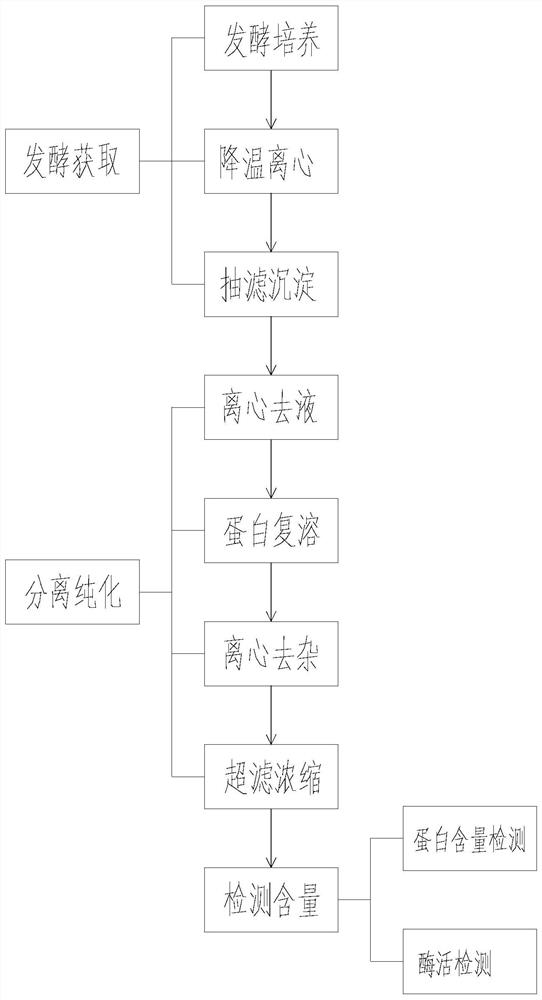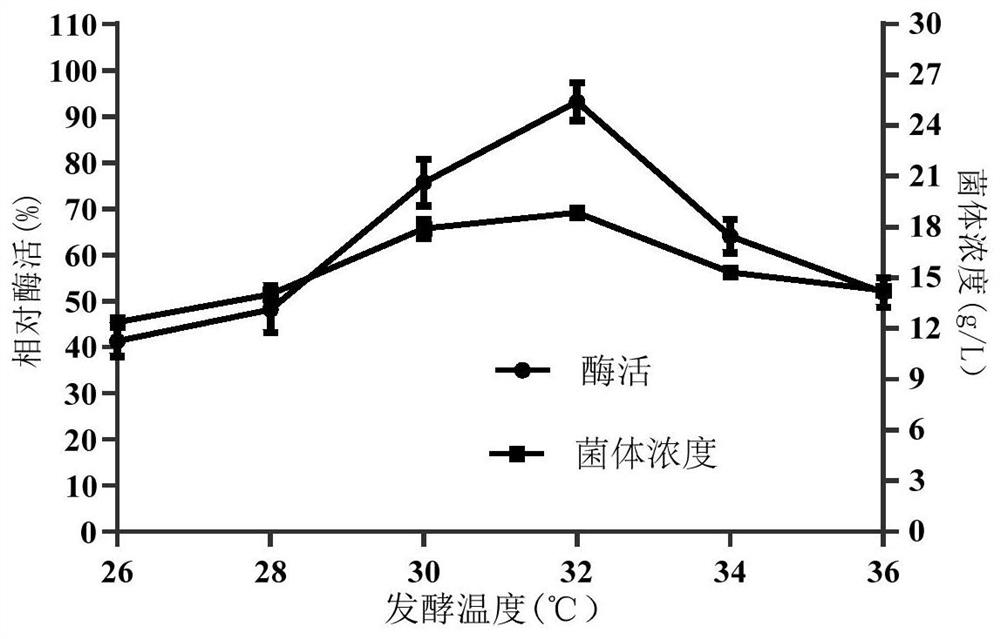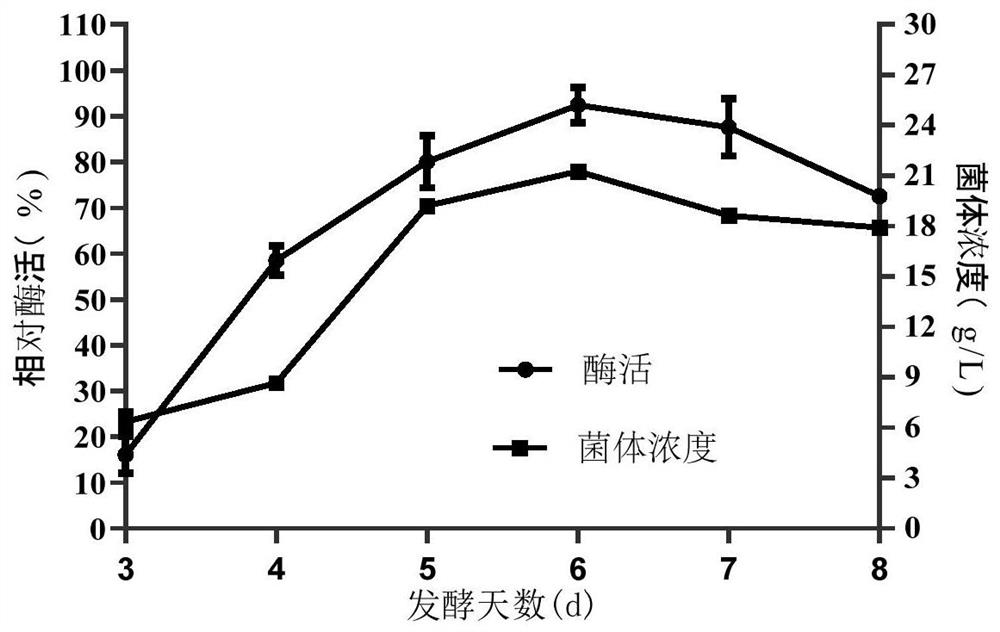Preparation method for obtaining phospholipase D through fermentation of genetically engineered streptomyces
A technology of genetic engineering and Streptomyces, which is applied in the field of fermentation engineering, can solve the problems affecting the application of PLD enzymes, low catalytic activity, and low PLD secretion, and achieve the effects of good preparation effect, good preparation quality and high cultivation efficiency
- Summary
- Abstract
- Description
- Claims
- Application Information
AI Technical Summary
Problems solved by technology
Method used
Image
Examples
Embodiment 1
[0043] A preparation method for obtaining phospholipase D by fermentation of genetically engineered streptomyces, the specific steps are as follows:
[0044] Step 1, fermentation and acquisition, specifically includes the following steps:
[0045] (1) Fermentation culture: Streptomyces was inoculated into MM medium, placed in an incubator and cultivated until the bacterial liquid was turbid.
[0046] Wherein the MM medium is the basic fermentation medium, and the specific components include soluble starch 10g / L, (NH 4 ) 2 SO 4 3g / L, K 2 HPO 4 ·3H 2 O 3.4g / L, NaH 2 PO 4 2H 2 O 2.34g / L, MgSO 4 ·7H 2 O0.6g / L, casamino acid 5g / L; four kinds of trace metal ions ZnSO 4 ·7H 2 O, FeSO 4 ·7H 2 O, MnCl 2 4H 2 O, CaCl 2 Both are 0.001g / L, and they are packed in a fluted shaker bottle.
[0047] (2) Cooling and centrifugation: Pour the bacterial solution into a centrifuge tube and cool down to 0-4°C, then use a centrifuge at 6000rpm to centrifuge at 4°C for 30min, and th...
Embodiment 2
[0061] With the preparation method in embodiment 1, the fermenting temperature of test streptomyces is to the influence of enzyme activity and thalline quantity, and specific mode is to set the cultivating temperature in (1) fermenting culturing in step 1, cultivating time is set as Fixed value, uniform Streptomyces inoculum, and under this condition, the enzyme activity and the number of bacteria were measured.
[0062] Set the temperature of the incubator at 26°C, 28°C, 30°C, 32°C, 34°C, and 36°C respectively, repeat the preparation method in Example 1 to inoculate 1% Streptomyces for 6 days, and measure the enzyme live and the number of bacteria, and the results are shown in the table below, and the line graph is made as figure 2 shown.
[0063]
[0064] From the table above and figure 2 It can be seen that the enzyme activity of phospholipase D and the concentration of Streptomyces reached the peak value when Streptomyces was cultured at 32°C, so 32°C was the optimu...
Embodiment 3
[0066] With the preparation method among the embodiment 1, the fermenting time of test Streptomyces is to the influence of enzyme activity and thalline quantity, and specific mode is that the culture temperature in the (1) fermentation culture in step 1 is fixedly set, and under this condition On the 3rd day, 4th day, 5th day, 6th day, 7th day, and 8th day of fermentation, enzyme activity monitoring and cell count monitoring were carried out.
[0067] That is, according to the preparation method in Example 1, inoculate 1% Streptomyces, cultivate at 32°C, track and detect the number of bacteria and enzyme activity data in the culture medium, and obtain the results as shown in the table below, and draw a line graph as image 3 shown.
[0068]
[0069] From the table above and image 3 It can be seen that the enzyme activity of phospholipase D and the thalline concentration of Streptomyces reached a peak value when fermented to the 6th day, so 6 days of fermentation culture w...
PUM
 Login to View More
Login to View More Abstract
Description
Claims
Application Information
 Login to View More
Login to View More - R&D Engineer
- R&D Manager
- IP Professional
- Industry Leading Data Capabilities
- Powerful AI technology
- Patent DNA Extraction
Browse by: Latest US Patents, China's latest patents, Technical Efficacy Thesaurus, Application Domain, Technology Topic, Popular Technical Reports.
© 2024 PatSnap. All rights reserved.Legal|Privacy policy|Modern Slavery Act Transparency Statement|Sitemap|About US| Contact US: help@patsnap.com










